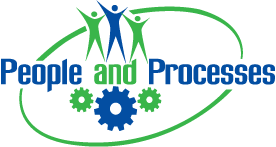 I recently posted this discussion on Linkedin
I recently posted this discussion on Linkedin
“What to do first?”
“OK - you've inherited a totally reactive environment and it needs to change. Which would you do first?
Set up a PM program
Deal with failures
Get better planning and scheduling
What order would you do these things and why?”
The discussion prompted many posts where opinions varied from one poster to the next. This was not surprising as each individual’s circumstances and experiences will drive their decision making – and there are as many combinations of those as there are people.
One of the interesting things was that quite a few started to suggest that whichever you chose it would involve people in the process. Those of you who have read what I have posted on many other discussions will not be surprised to find that I agree with this sentiment – especially as the title of my book is People - A Reliability Success Story. Where I start to differ is that I would suggest that it starts with just one person – you (or me).When we are faced with an environment like the one I described it becomes essential that you are confident that you can make the difference and you need to display this confidence – not with arrogance but with assuredness. People will be looking to you for guidance and support as they realize that they need to do the one thing that most people struggle with – change. The reason that most people have a tough time with change is simply the fear of the unknown – they know what is this side of change and have become comfortable with it – on the other side? – that’s a different matter and they want to feel sure that it will be better and you will be there for them.
Now to the posted question – my circumstances and experience have guided me to the following approach.
When I have faced the onslaught of failures that a reactive environment brings, I have usually taken one step back and observed before I have done anything. What I look for are the emotional triggers that really get the juices flowing in the operations and maintenance group – you know- those things that everyone hates and is fed up with having to deal with. I try and identify which of those failures I can remedy with the least amount of energy, expenditure or effort – and go ahead and enable the remedy. What I have done by doing this is not just removed a repeat annoying failure but I have gained credibility with those who are going to be the ones who will enact the future improvements. The realization that things (even one thing) can get better gives the group some renewed confidence and makes them far more open to trying more improvements (changes). I came to the conclusion many years ago that there is one truism in Maintenance and Reliability and that is that ‘ there is never enough time to do everything I need to do’ – especially if I try and do it all myself so having people prepared to join in is crucial. This is where the credibility comes in because without credibility you won’t have trust and without trust, change is difficult at best.
I have always explained the need for the changes (even when it is apparent) and what the impact of the changes will be, what everyone’s involvement will be and how we are going to approach it. I make sure that everyone understands that they are a part – a big part – of the solution to our woes. I try and move from the Manager/supervisor roles to the guide/enabler roles as those closest to the problems usually have some good ideas as to their solution.
I still focus on failures – why? Because, depending on which expert you talk to, only 20-30% of failures are caused by lack of PM or poor maintenance so even if I get everything right with my PM system I’ll still have70% of my failures – and if I’m planning and scheduling to perfection I am still planning and scheduling what should be unnecessary work. If I focus on the failures they will help point me in the direction of which PMs need to created/improved/updated/increased. – and aren’t all PMs set up to mitigate or prevent failures? Using something as basic as 5 why to get to approximate root cause will help get you over the hump and out of the valley of despair and free up time and resources to start on the things you want to do in a more organized fashion such as PM optimization or solid Planning and Scheduling or even RCM. You never know you might start to build another essential as you begin to deal with the failures, and that’s building partnerships – with operations, engineering, finance, procurement etc and that’s another reason why the early win is important.
A tip I have given many times is that – it’s difficult to remember that the goal is to drain the swamp when you’re up to your armpits in alligators – sometimes you’ve just got to kill a few alligators!
Or at least that’s the way it seems in my part of the swamp!
What do you think? Please post your comments below.
Cliff
